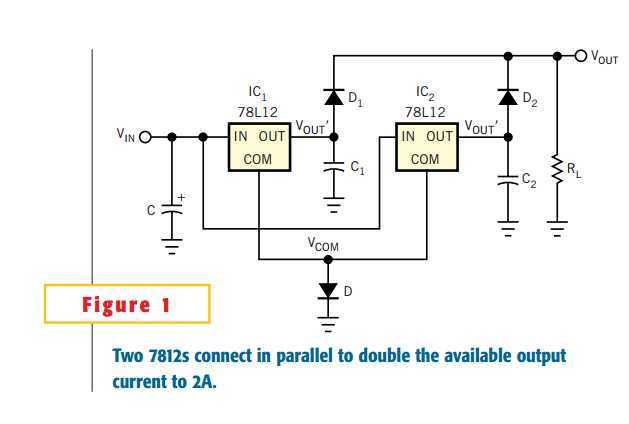标签:des blog http io ar sp for on 2014
Voltage-regulator design for high output currents can be a critical and difficult task. Although voltage regulators with 1A maximum output current are simple to design, thanks to 78xx three-terminal voltage regulators, at output currents higher than 1A output, problems arise. For high output currents, voltage regulators usually use parallel-connected power transistors. The design of the operating points of these power transistors is a difficult task, because the transistors need critical power resistances at the collector and the emitter to set the dc operating point. Both the power transistors and the power resistors dissipate high power, so the design needs heat-sinking. This Design Idea implements a simple voltage regulator that delivers high output current. The basic idea is to parallel-connect multiple three-terminal regulators. These 78xx regulators each handle 1A and are available in 5, 6, 8, 9, 10,12, 15, 18, and 24V versions. In Figure 1, two 7812 regulators are connected in parallel.
The two 7812s operate independently, and each delivers a maximum of 1A. D1 and D2separate and isolate the two regulators. The output voltage is the regulator‘s nominal output minus a diode drop: VOUT=VREG–VD. The output voltage of the regulators is the specified value if the COM pin connects to ground (0V). To increase the output voltage of the circuit in Figure 1 to the desired value, the COM pin must connect to a voltage point one diode drop above ground. C, C1, and C2 are filter capacitors. Figure 2 shows a voltage regulator that uses 20 7812s and delivers 20A. All the diodes are 1N4007 types. C=47,000 µF, and all the numbered capacitors have a value of 4700 µF. The 7812s all connect to a heat sink that a small fan ventilates. You can expand the concept of this Design Idea to hundreds of amperes.

High-current supply uses standard three-terminal regulator
标签:des blog http io ar sp for on 2014
原文地址:http://www.cnblogs.com/shangdawei/p/4128206.html